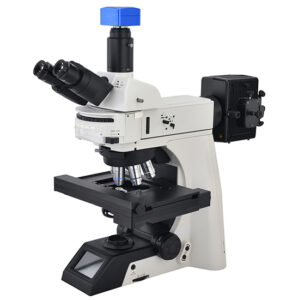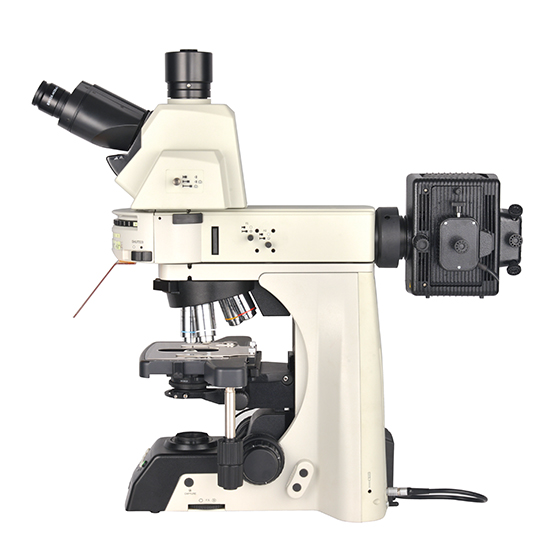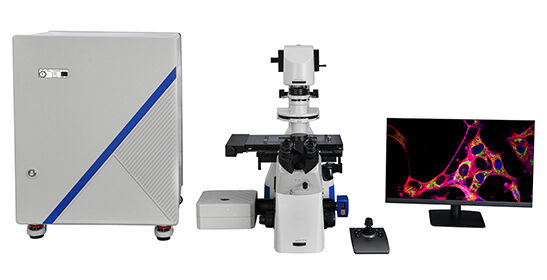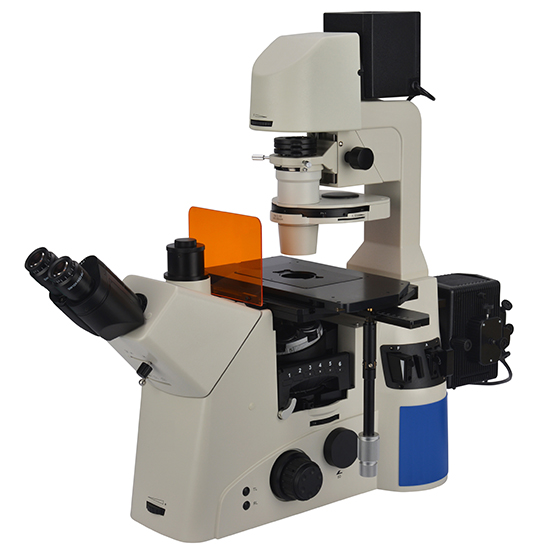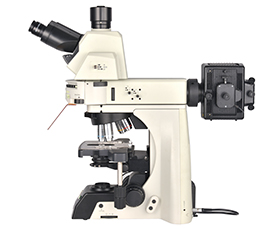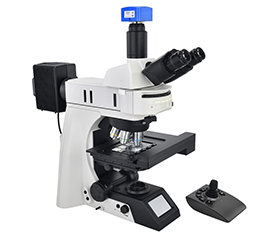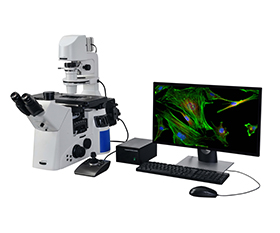What is Fluorescence Microscope?
A fluorescence microscope is a type of optical microscope that uses a high-intensity light source to illuminate the specimen and excite fluorochromes in the sample. The illumination of the specimen is usually done with a light source that emits ultraviolet light. They are widely used in biological, medical and industrial fields.
How does a fluorescence microscope work?
A fluorescence microscope uses a mercury or xenon lamp to produce ultraviolet light. The light comes into the microscope and hits a dichroic mirror — a mirror that reflects one range of wavelengths and allows another range to pass through. The dichroic mirror reflects the ultraviolet light up to the specimen. Some specimens fluoresce naturally under ultraviolet light because they contain fluorescent substances such as chlorophyll. If the specimen to be viewed does not naturally fluoresce, it can be stained with fluorescent dyes called fluorochromes.
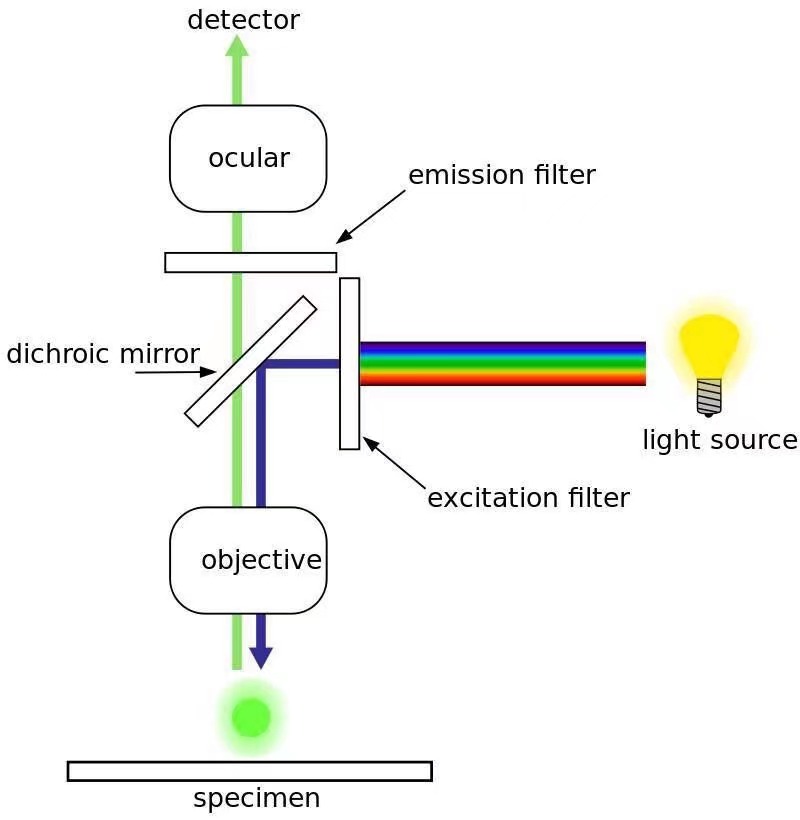
What does a fluorescence microscope consist of?
1. Light Source
The most common light sources are mercury, xenon, and LEDs. Mercury provides the best quality of light for fluorescence microscope. LEDs are becoming more popular because they are less expensive than other sources and they consume less power.
|
|
Mercury Lamp |
Xenon Lamp |
LED |
|
Wavelength of the Emitted Light |
350-370 nm |
400nm~ 450nm |
400-700 nm |
|
Lifetime(hour) |
200-300 |
400-600 |
10000 |
|
Advantage |
1. High Intensity Light, the Most Common Light Sources. 2. It emits strong ultraviolet and blue-violet to excite all kinds of fluorophores. 3. Bright and colorful Images. |
1. The spectral intensity is stable. 2. Strong spectral intensity in the infrared and mid-infrared. |
1. Easy to replace. 2. No need to warm up. 3. Can be switched on and off instantly. 4. Control light source intensity. |
|
Disadvantage |
1. A Short Lifetime. 2. Long warm up time. |
1. Special low voltage DC power box is required for excess heat. 2. More Expensive than Mercury Lamp |
1. UV light is weaker than mercury lamp. 2.Each wavelength of light requires a separate LED due to the narrow bandwidths they emit. |
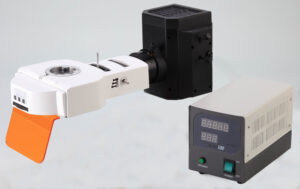 Mercury Fluorescent Attachment
Mercury Fluorescent Attachment
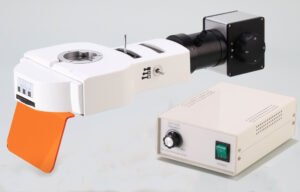 LED Fluorescent Attachment
LED Fluorescent Attachment
2. Excitation Filter
The excitation filter is essential for the operation of a fluorescence microscope. It passes the light of a shorter wavelength, which the fluorescent dye could absorb. Also, it blocks the other sources of exciting light.
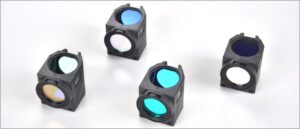 Excitation Filter(B,G,UV)
Excitation Filter(B,G,UV)
3. Dichroic Mirror
The dichroic mirror is a type of optical filter that reflects light at certain wavelengths while transmitting others. It is used in fluorescence microscopes to separate the excitation and emission wavelengths.
4. Emission Filter
The emission filter passes only the wavelengths emitted by the fluorophore and blocks all undesired light outside this band – especially the excitation wavelengths.
5. Fluorescent dyes
Fluorescent dyes are organic compounds that possess a property of fluorescence, by which they can form a fluorescent image by emitting highly contrast visible green light after getting excited by the highly illuminating ultraviolet light. Commonly used fluorescent dyes are; DAPI (49,6-diamidino-2-phenylindole), acridine orange, auramine-rhodamine, Alexa Fluors, or DyLight 488.
How many types of fluorescence microscopes?
1. Upright Epifluorescence Microscope:
It is the most common type of fluorescence microscope. The excitation of the fluorophore and detection of the fluorescence are done through the same light path (i.e. through the objective). The majority of fluorescence microscopes, especially those used in the life sciences, are of the epifluorescence design.
BS-2081F Research Fluorescent Biological Microscope
2. Confocal Fluorescence Microscope:
Confocal Fluorescence Microscope: This type of fluorescence microscope combines laser scanning with fluorescent illumination to produce an image. It can be used in wide range of applications, such as studying cells and tissues, detecting proteins and other substances within cells, and measuring the thickness of materials.
BCF295 Laser Scanning Confocal Microscope
3. Inverted Fluorescence Microscope
This kind of microscope’s light source and condenser are located on the top, facing downwards. The angle of illumination must be at 90 degrees with respect to the surface of the specimen being examined.
BS-2095F Inverted Fluorescent Microscope
What are the advantages and disadvantages of fluorescence microscopes?
Advantages:
– Enables observation of cells in living organisms without damaging them
– Provides high resolution images with accurate colors
– Allows for the study of live processes in cells
– Be used to identify different types of molecules inside cells, such as proteins or nucleic acids.
Disadvantages:
-It only allows the observation of specific structures inside a cell tagged with the fluorescent dye.
-The photobleaching due to the electron excitation during the process of fluorescence may affect reactive molecules of the fluorescent dyes. As a result, the reactive dyes might lose their chemical property of fluorescence emission intensity.
-The cells are susceptible to the phototoxic effect after staining with fluorescent dyes, as the fluorophore molecules absorb the high energy photons from the short-wavelength light.
What are the applications of a fluorescence microscope?
Fluorescence microscopes are widely used in various fields of research and application including biochemistry, cell biology, microbiology, immunology, and medicine.
1. In the field of biology, the fluorescence microscope enables accurate and detailed identification of cellular and submicroscopic cellular components and activities with the help of fluorescent dye labeling.
2. In the medical field, the fluorescence microscope can use fluorescent reagents to detect the presence and distribution of bacteria and viruses, or to assist in labeling surgical targets to facilitate surgery.
3. In the field of mineralogy, the fluorescence microscope is often used to study substances with spontaneous fluorescence properties, such as asphalt, petroleum, coal, graphene oxide and other minerals.
4. In materials science, the fluorescence microscope can be used in the textile industry or the paper industry to analyze fiber-based materials.
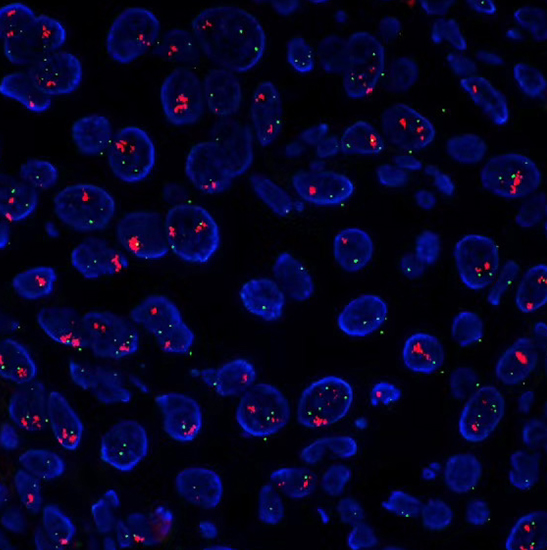
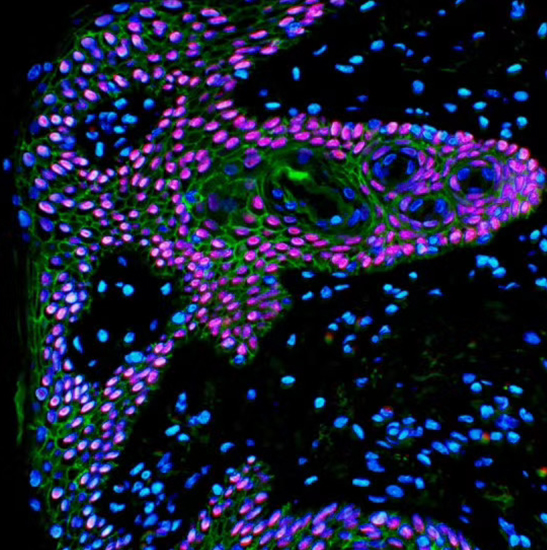
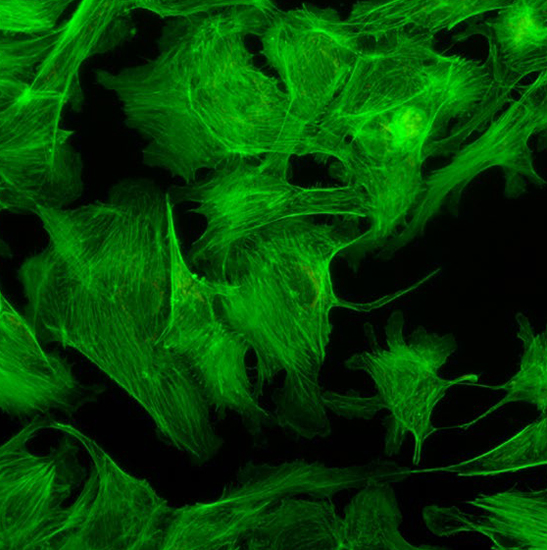
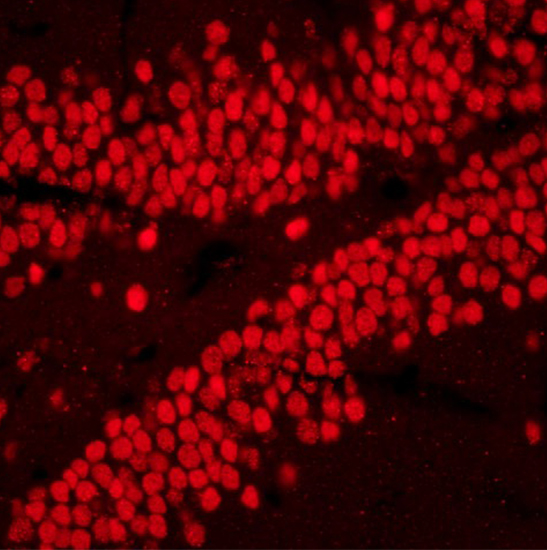
The resources are collected and organized on the Internet, and are only used for learning and communication. If there is any infringement, please contact us to delete.


